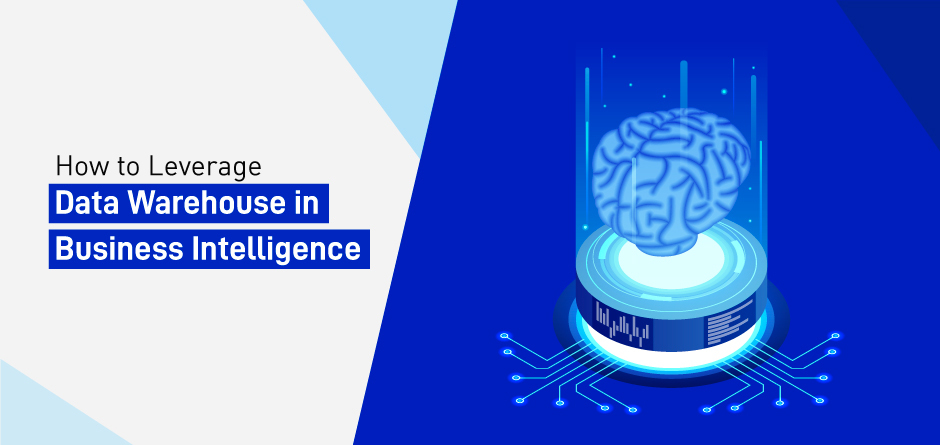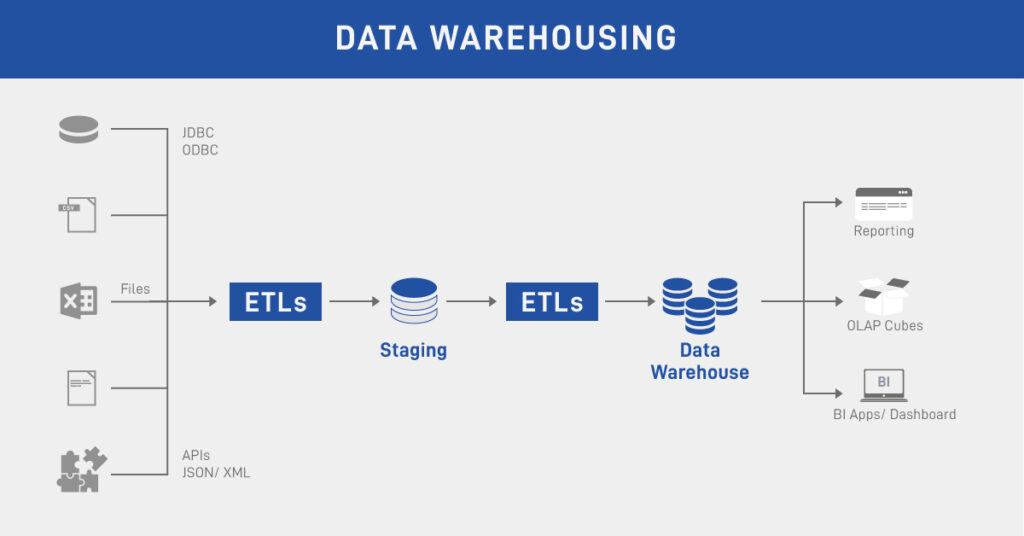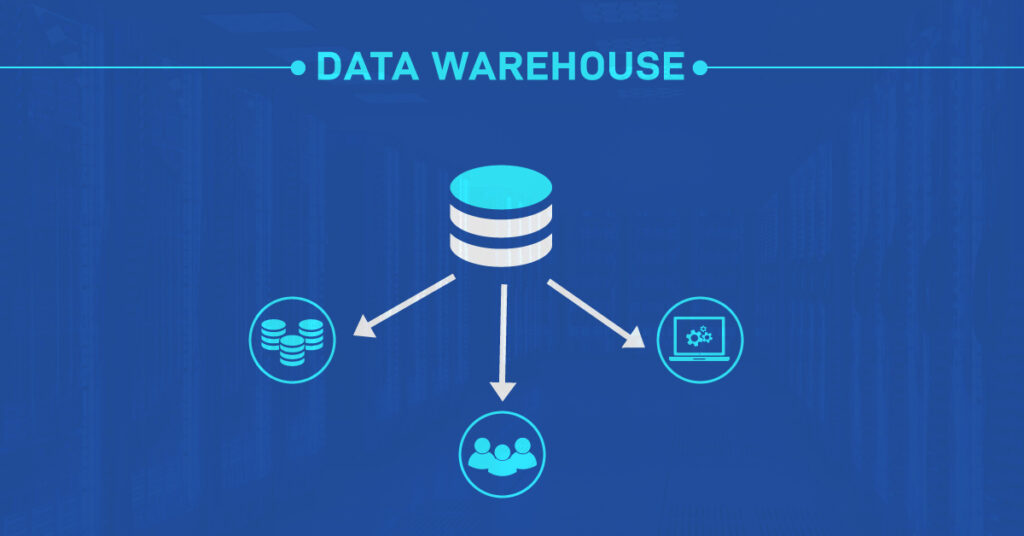
How to Leverage Data Warehousing in Business Intelligence
Business intelligence, as we all know it today, wouldn’t be possible without the data warehouse.
Data warehousing and business intelligence are terms used to describe the strategy of storing all the company’s data in internal or external databases from various sources with the most specialized in analysis and generating actionable insights through BI tools.
One without the other wouldn’t function.
At its core, business intelligence is the ability to answer complex questions about your data and use those answers to create informed business decisions. To try and do this well, you need a data warehouse, which not only provides a secure way to centralize and store all of your data but also a way to quickly find the answers you wish, once you need them.
And that’s a fairly important role. By 2021, it’s estimated humanity will have produced a complete 175 zettabytes of information. For context, that’s 175,000,000,000 terabytes.
Where does all of this information go? Well, most of it goes within the data warehouses.
Companies use data warehouses to manage transactions, understand their data, and keep it all organized. In short, data warehouses make large amounts of knowledge more usable for organizations of all sizes and kinds. This has made them a linchpin of knowledge pipelines and business intelligence systems the globe over. And understanding how data warehouses work can facilitate you to fulfill the total potential of business intelligence (it’s not as complex as it may seem).
For an extended time, Business Intelligence and Data Warehousing were almost synonymous. You couldn’t do one without the other: for timely analysis of massive historical data, you had to prepare, aggregate, and summarize it during a specific format within a knowledge warehouse.
But this dependency of BI on data warehouse infrastructure had an enormous downside. Historically, data warehouses were or are a chic, scarce resource.
They take months and numerous dollars to set up, and even when in situ, they permit only very specific sorts of analysis. If you wish to ask new questions or process new kinds of data, you face major development efforts.
What is a Data Warehouse?
A data warehouse is a data management system that stores large amounts of information for later use in processing and analysis. You’ll consider it as an outsized warehouse where trucks (i.e., source data) unload their data. That data is then sorted into rows and rows of well-organized shelves that make it easy to seek out exactly what you’re trying to find later.

The biggest innovation data warehouses introduced at their inception, consistent with DW 2.0: The Architecture for the following Generation of knowledge Warehousing was the flexibility to store “integrated granular historical data.”
Breaking that down into human terms, this suggests data warehouses surpass storing data that’s:
- Integrated: They combine data from many databases and data sources.
- Granular: the information they home is highly detailed and may be employed in many various ways.
- Historical: they’ll host a never-ending record of knowledge over years and years.
You can store this data in three ways: on-premise data warehouses, cloud data warehouses, and hybrid data warehouses.
On-premise data warehouses run on physical servers that your company owns and manages. Cloud data warehouses are fully online, and you get space on servers that another company operates, like Amazon Redshift. Hybrid data warehouses are a combination of both on-premise and cloud, and corporations making the transition to the cloud over a period of your time use this option.
With all the data stored in one place, data warehouses use a particular approach to process data called online analytical processing (OLAP), specifically designed for complex queries.
One way to give some thought to it’s that after you attend your data warehouse to ask an issue about the connection between one set of information and another, OLAP may be a way of organizing and moving among the rows and rows of shelves to find that information quickly.
This is great for business intelligence because the questions you ask about your data to create decisions are rarely simple. Because data warehouses use OLAP, they make finding answers to those complex questions very efficient. As a result, they’ve become a foundation for several successful business intelligence systems.
What is Business Intelligence and Analytics?
Business Intelligence (BI) is a set of methods and tools organizations use to access and explore data from diverse source systems. This helps them better understand how the business is performing and make informed decisions that improve performance and create new strategic opportunities for growth.
Business intelligence (BI) may be a process for analyzing data and deriving insights to assist businesses in making decisions. In a good BI process, analysts and data scientists discover meaningful hypotheses and answer them using available data.
For example, if management is asking, “how will we improve the conversion rate on the website?” BI can identify a possible cause for low conversion. The reason may well be a lack of engagement with website content. Analysts can demonstrate if engagement hurts conversion and which content is the root cause within the BI system.
The tools and technologies that make BI possible take data—stored in files, databases, data warehouses, or perhaps on massive data lakes—and run queries against that data, typically in SQL format. Using the query results, they create reports, dashboards, and visualizations to assist extract insights from that data. Insights are utilized by executives, mid-management, and also employees in day-to-day operations for data-driven decisions.

Role of Data Warehousing in Business Intelligence
In business intelligence, data warehouses function as the backbone of data storage. Business intelligence relies on complex queries and comparing multiple data sets to inform everything from everyday decisions to organization-wide shifts focused.
To facilitate this, business intelligence comprises three overarching activities: data wrangling, data storage, and data analysis. Data wrangling is typically facilitated by extract, transform, load (ETL) technologies, which we’ll explain very well below, and data analysis is completed using business intelligence tools.
The glue holding this process together is data warehouses, which function as the facilitator of data storage using OLAP. They integrate, summarize, and transform data, making it easier to research.
Even though data warehouses serve as the backbone of knowledge storage, they’re not the sole technology involved in data storage. Many companies bear a data storage hierarchy before reaching the purpose where they need a data warehouse.
How Do Business Intelligence platforms and data warehouses work together?
While data warehouses store data, business intelligence platforms analyze data. When you get these two systems to work together seamlessly, you’ll unlock the full benefits of business intelligence.
Business intelligence tools fulfill the “data analysis” stage of business intelligence, but they get their name because they’re the culmination of the other two steps: data wrangling and data storage.
First, business intelligence tools integrate with many different sources, including your data warehouse. They then provide an easy way to query the data to analyze data for trends and insights. Then, they make it easy to visualize and share data using dashboards and reports.
These three steps, built on top of a good data warehouse foundation, will make it easier to follow through on the core promise of business intelligence: providing everyone in your organization with the ability to understand and act on data.
RECENT POSTS
CATEGORIES
